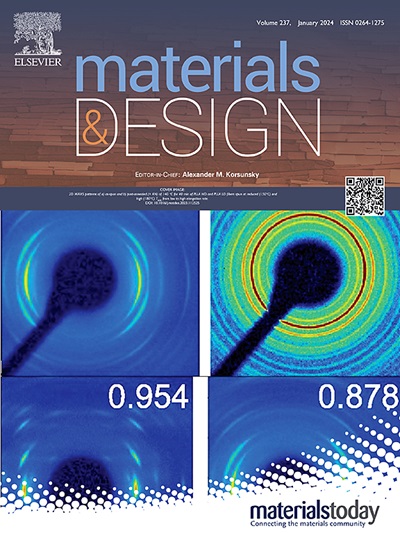Spontaneous deposition of Ag nanoclusters on defect-rich α-Co(OH)2 for high-rate performance supercapacitor
IF 7.6
2区 材料科学
Q1 MATERIALS SCIENCE, MULTIDISCIPLINARY
引用次数: 0
Abstract
Enabling the rapid and convenient preparation of supercapacitor electrode materials with excellent rate performance and stability, this study utilizes the standard redox potential difference between α-Co(OH)2 and Ag, which drives the spontaneous deposition of Ag ions onto the defect-rich α-Co(OH)2 layer. The deposition of Ag nanoclusters is controlled by adjusting the reaction time. The results of Density functional theory (DFT) calculation reveal that Ag deposition interacts with electrons in the Co d-orbital, enhancing capacitive performance and anion transport rates (Rtransfer). The α-Co(OH)2Ag90@carbon paper (CP)600 exhibits a specific capacitance of 801 F g−1 at 1 A g−1 and a rate capability of 57 % at 100 A g−1, maintaining 85.7 % capacitance retention after 10,000 charge–discharge cycles at 100 A g−1. The α-Co(OH)2Ag90@CP600 as a cathode in an asymmetric supercapacitor (ASC) paired with an anode which using silver nanoparticles integrated with highly water-dispersible graphene nanosheets (AgNP@HWGN). The ASC device achieves an energy density of 35.1 Wh kg−1 at a power density of 900 W kg−1 (1.8 V) and demonstrates excellent cycling stability over 10,000 cycles under 20 A g−1. This approach highlights the potential of α-Co(OH)2Ag90@CP600 as a promising supercapacitor electrode material, offering an effective pathway for developing high-performance electrode materials.

求助全文
约1分钟内获得全文
求助全文
来源期刊

Materials & Design
Engineering-Mechanical Engineering
CiteScore
14.30
自引率
7.10%
发文量
1028
审稿时长
85 days
期刊介绍:
Materials and Design is a multi-disciplinary journal that publishes original research reports, review articles, and express communications. The journal focuses on studying the structure and properties of inorganic and organic materials, advancements in synthesis, processing, characterization, and testing, the design of materials and engineering systems, and their applications in technology. It aims to bring together various aspects of materials science, engineering, physics, and chemistry.
The journal explores themes ranging from materials to design and aims to reveal the connections between natural and artificial materials, as well as experiment and modeling. Manuscripts submitted to Materials and Design should contain elements of discovery and surprise, as they often contribute new insights into the architecture and function of matter.
 求助内容:
求助内容: 应助结果提醒方式:
应助结果提醒方式:


